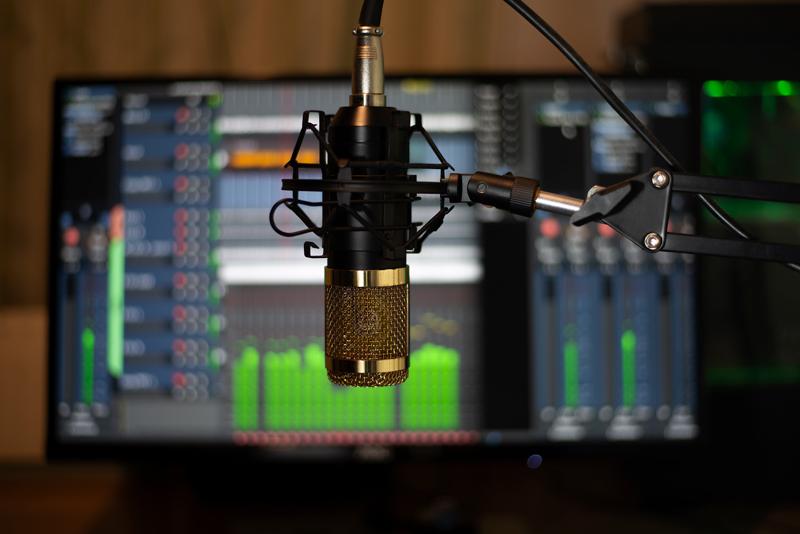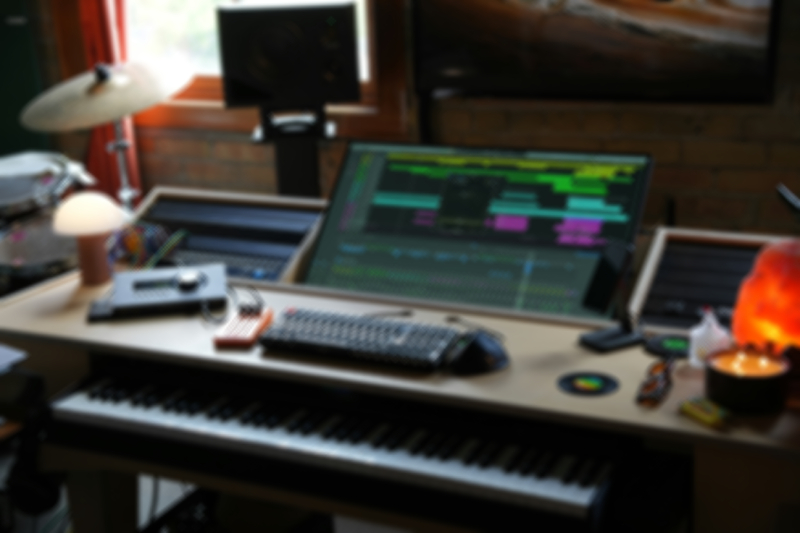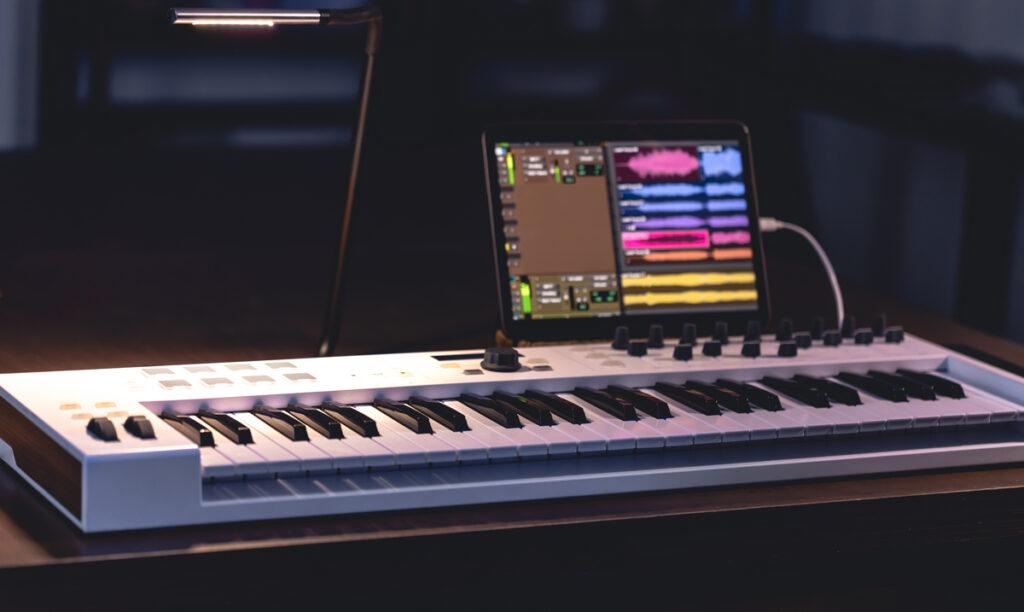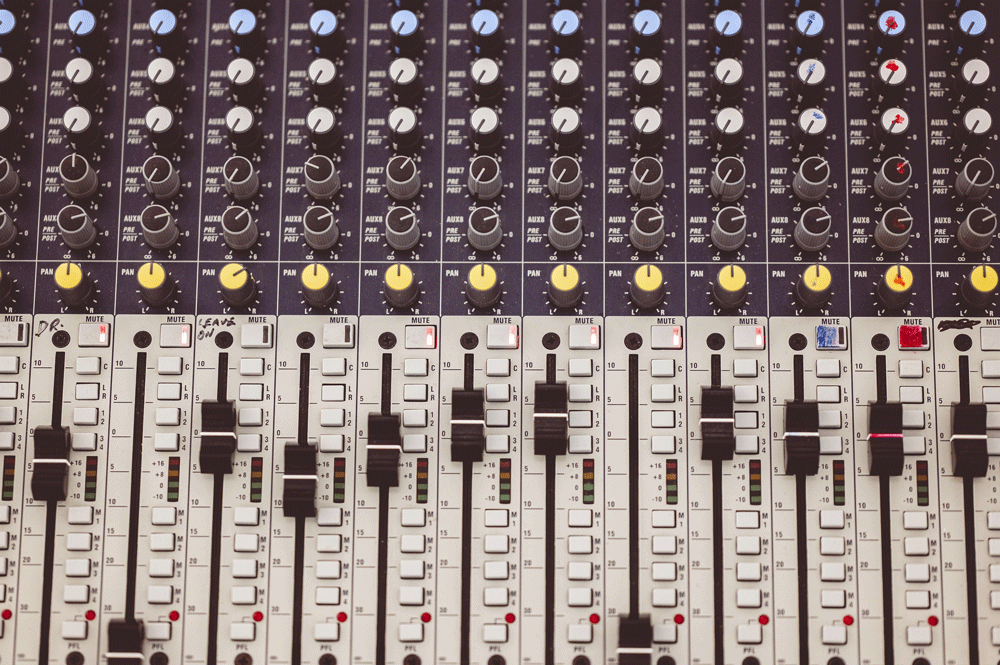In music production, saturation plugins are used all the time, and without saturation, songs would lose lots of their charm and power. A good mixing engineer knows how to apply saturation plugins correctly and make the sound of a mix perfectly warm and rich with saturation.
There are different types of saturation, and for each song, you need to know exactly what kinds of saturation you want to use and how, with the help of different saturation plugins, you can achieve your mixing goals.
In this article, we’ll explain how saturation works and describe our favorite saturation plugins.
What is saturation in music?
Saturation wasn’t invented by audio engineers, it came as a side effect of using analog audio gear. The way tape machines and preamps worked when overloaded turned out to be very useful. The imperfections of analog sound processing turned out to be beautiful and created rich and unique sound characteristics.
With the transition to digital recording and processing music, different analog saturation and distortion types were reproduced as saturation plugins, distortion plugins, tape machine emulation, and others to use with digital audio workstations (DAWs) because, without analog effects, digital music sounds too clear, too cold, and not so pleasant to the ears.
How saturation occurs
Different types of saturation can occur in analog equipment when it’s overloaded. For example, with tape machines, saturation occurs when an analog tape is overloaded and the input signal is louder than the limit. Saturation also occurs in a tube preamp when it’s overloaded.
As opposed to analog gear, digital workstations do not create saturation when the input signal exceeds the limit. The wave that’s louder than the digital equipment can record will only get cut, which will result in clipping.
On the other hand, an analog tape recording machine, when overloaded with the input signal, works like a compressor, suppressing the peaks and, at the same time, creating additional harmonics of the initial signal. This transformation of a sound wave is called harmonic distortion.
Harmonic distortion
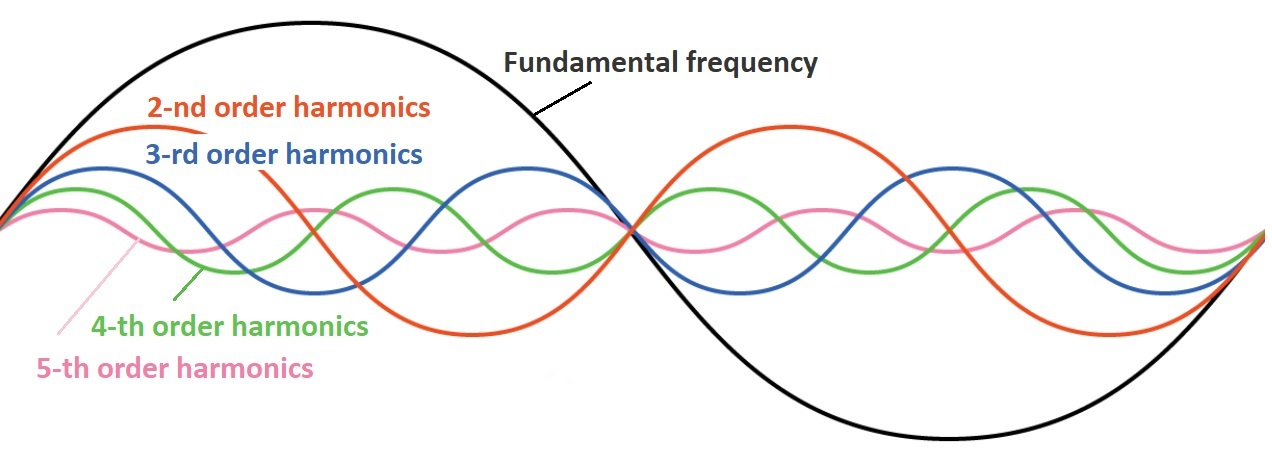
Let’s consider, for example, a tape machine or tube preamp. When the sound wave that goes into these pieces of analog gear is too loud, the peaks get compressed, and harmonics are created.
Harmonics are integer multiples of the initial frequency, which in this case is called the fundamental frequency.
The additional harmonic waves are created at a quieter rate than the fundamental. Moreover, the further from the fundamental the generated harmonic wave is, the lower its amplitude. That’s why it’s usually only a few frequencies that are the closest to the initial one that can be heard very well and make a big difference in the mix.
Even order harmonics
There are two different types of harmonic distortion. The first one is called even harmonics, it’s represented by only those harmonic waves that are the fundamental frequency multiplied by even numbers.
For example, for a 200 Hz sound wave, the even harmonics will be generated at 200*2=400 Hz, 200*4=800 Hz, 200*6=1,2kHz, and so on.
It’s sometimes called the second order harmonics because the loudest additional overtone in this case will be twice the initial frequency.
Twice and four times the initial frequency is still the same note, only in the higher octaves. However, six times the fundamental frequency (the 6th harmonics) gives us two octaves plus a minor seventh interval. After that comes the same note again in a higher octave. So, we can say that even harmonics mostly consist of the same notes as the fundamental in higher octaves.
Even harmonics sound pleasant as if we are enhancing the same note by supporting it with higher-frequency material. It sounds beautiful and gentle, not adding many extra notes to the music but just enhancing it.
Odd order harmonics
Odd order harmonics add frequencies that are odd-number multiples of the fundamental frequency. For example, for a 200 Hz sound wave, the odd ones will be generated at 200*3=600 Hz, 200*5=1 kHz, 200*7=1,4kHz, and so on.
The same as with even harmonics, the frequencies that are closer to the fundamental frequency are created louder, and the higher you go along the frequency spectrum, the lower the peaks of generated harmonic waves you’ll see.
Odd order harmonics are different from even harmonics because they generate a lot of notes that are different from the initial one, and the created intervals between notes aren’t octaves. Odd harmonics generate a pleasant chord that consists of a fundamental frequency, 3rd, and 5th harmonics. Further and higher harmonic waves are also different notes that are not necessarily all in harmony with the fundamental note, but they are generated much quieter the further along the frequency spectrum they are.
By adding many different notes to the fundamental note, odd order harmonics sound more aggressive and complex than the even order ones.
The difference between tube saturation and tape saturation
The saturation produced in tube-powered equipment is called tube saturation. Most tube preamps produce even harmonics if overloaded.
At the same time, tape machines tend to create odd harmonics when overloaded.
Besides possible saturation, analog gear, and especially tape machines, also create different kinds of interesting analog warmth and affect the frequency characteristics of the music.
At the same time, each piece of analog equipment is unique and can produce harmonic waves with unique characteristics. Each piece of gear has its own way of producing saturation, analog warmth, and beautiful analog artifacts. That’s why many famous pieces of analog gear have been emulated with plugins in an attempt to recreate the unique effect that this particular machine has on the sound that goes through it.
How saturation plugins make the sound better
With the help of saturation plugins and tape emulation plugins, audio engineers can tame transient peaks, introduce gentle compression, and at the same time add a lot of new harmonic waves and warmth to the sound.
These are just a few things saturation plugins and analog emulation can help you achieve in the mix:
- Saturation plugins help increase perceived loudness and tame transient peaks.
- With these plugins, you can make the sound richer and more interesting.
- You can also add analog warmth to the mix.
- Saturation glues tracks together when applied to buses.
- With saturation, you can help single tracks of instruments and vocals better cut through the mix.
- Harmonic distortion adds higher-frequency material to instruments.
There are a lot of saturation plugins available to use with a DAW, and each of them is a bit different. They emulate tube saturation and tape saturation, and there are also different types of distortion plugins. Some of them are more complicated, while others are easier to use. With some of them, you can add gentle harmonics, while with others, you can create extremely aggressive distortion and effects that you can use only in certain mixes.
Now we’ll share with you our set of favorite saturation plugins that we use for mixing and mastering in our studio. We’ll describe when and how we use each of them to create impressive and professional-sounding mixes.
Want a free test mix of your track?
We get it.
That’s why we’ll do a full hybrid (analog + digital) mix of your song —
for free.
No upfront payment. No risk.
You only pay if you’re blown away. And if you are, we’ll slash 40% off the final price.
Nobody else in mixing and mastering offers this.
Why?
Because most studios say yes to every project. We don’t. We only mix what we’re excited about — so send us your best track. If we like it, we’ll mix it like it’s going to the Grammys.
👉 Just drop your name and email to get started.
Our favorite saturators to use in every mix
These are our favorite saturation plugins. They are classics and are considered the best by many professional audio engineers. No free plugin can compete with them. These classic plugins help increase overall perceived loudness and create all kinds of saturation. We use them in mixing all the time.
Oxford inflator saturation plugin
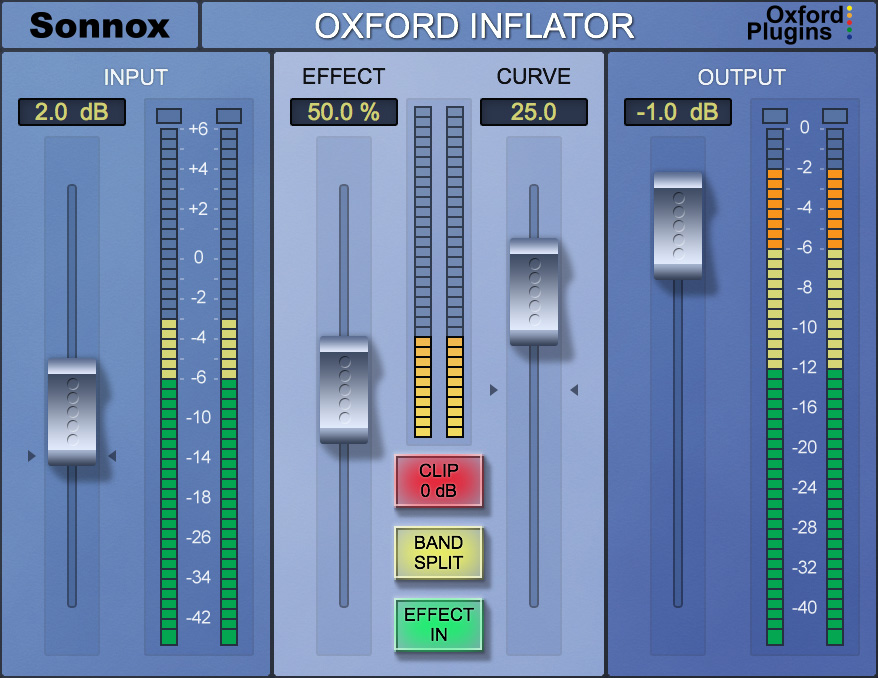
This plugin makes the signal louder as a waveshaper and adds harmonics, which make the sound bigger and more upfront.
You can use it everywhere, from individual tracks and buses for mixing to mastering. The Oxford inflator can be overloaded on input, which will bring even more distortion to the picture.
This saturator helps you achieve a perfect mixing result, and at the same time, it has simple settings. Generally, it’s a must-have plugin for every audio engineer.
FabFilter Saturn
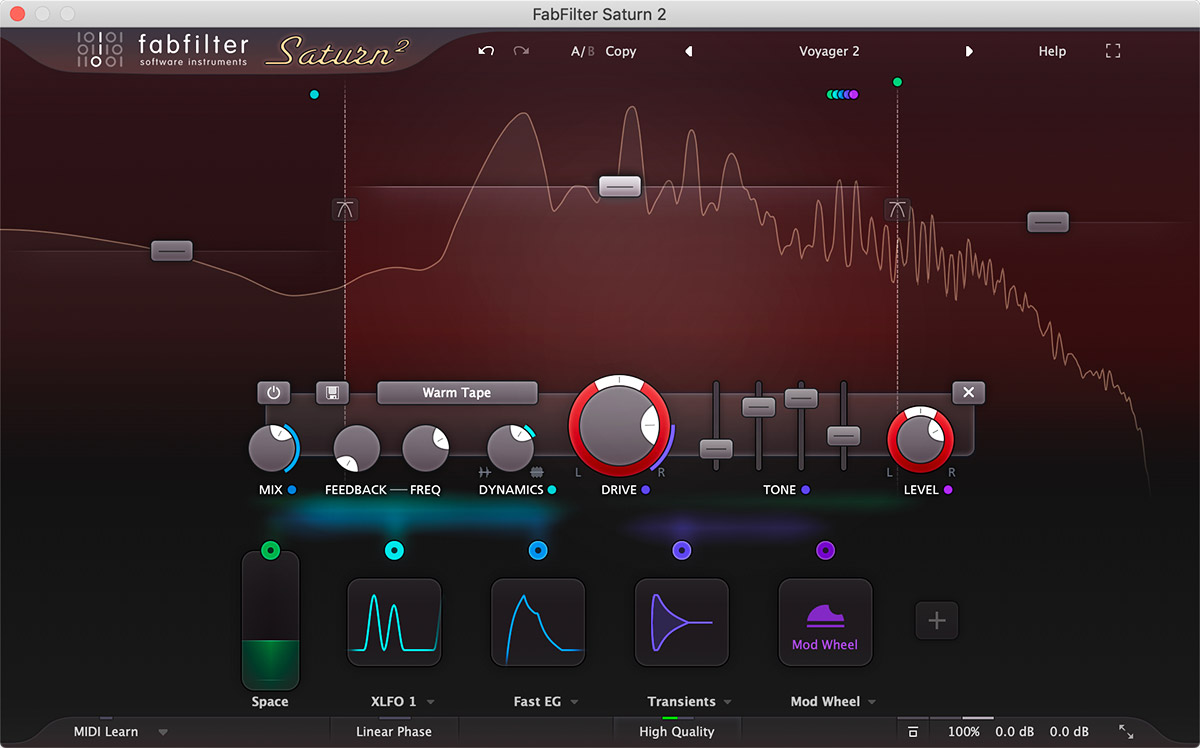
FabFilter Saturn can be called the most universal plugin. It can substitute for all saturators because of its extremely versatile functionality; this is especially true for Saturn 2.
Whatever you want from a saturation plugin, Saturn 2 can do it. From creative FX to saturation, soft clipping, rough distortion, amp simulation, and so on.
So, if you need to start with one saturator, FabFilter Saturn is the plugin that will do. This one you can also use in almost every mixing session and during mastering.
Tape emulators
These are saturators that imitate the tape machine effect and add saturation. They are used by mixing and mastering engineers as soft compressors to reduce dynamic range and add warmth and other analog characteristics to the sound.
Tape machine emulation is a pretty aggressive saturation, the frequency response and waves are altered a lot when you apply tape emulation heavily. Low-frequency picture can be altered, and many sound characteristics can change. But sometimes it’s useful, and using tape emulators, we add analog charm and individuality to a song.
Overloading tape emulators, we receive saturation, with which the overall perceived loudness goes up because the transients are smoothed out. Also, WOW and other effects add interesting distinction to the song. We use tape simulation to some degree in most of our mixing sessions.
However, if you want to apply tape machine emulation to the master bus, be very careful because the effect of these plugins is strong and can change the balance of the song you are mastering.
If you created a mix and then applied tape emulation, you may have to adjust the mix again because tape changes a lot in the sound qualities and frequency response of the mix. So, if you are planning to put a tape plugin on the master bus while mixing, it’s better to do so in the beginning and then do the mixing regarding its effect on the overall balance of the mix.
Let’s look at some examples of tape machine emulation that we use often in our studio.
Kramer Master Tape
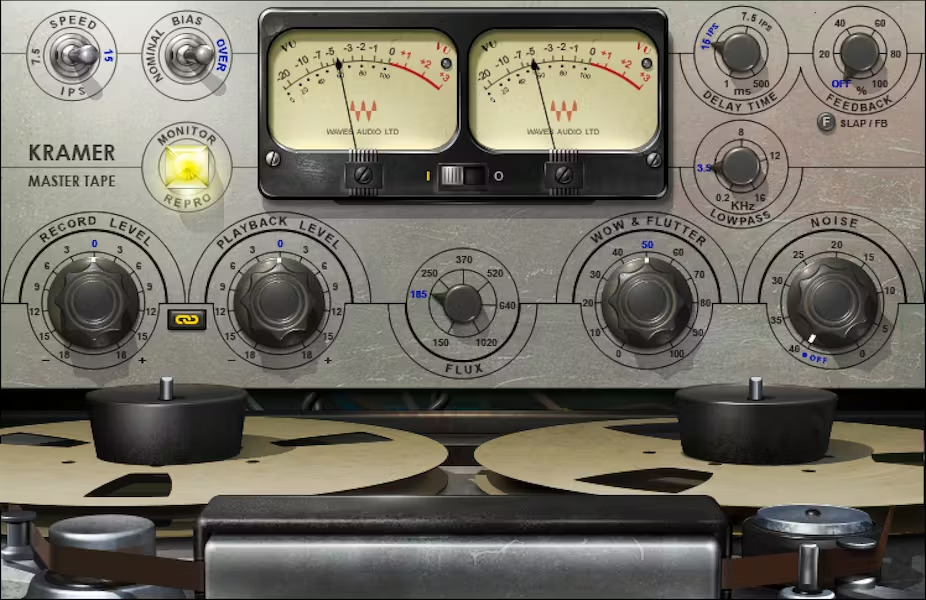
It’s a classic tape emulator plugin from Waves. It can help you add tape and tube saturation to the mix. You can control the sound texture using flux control.
It produces rich tape saturation that you can use on kick and snare drums, bass, piano, or other instruments. The use of analog tape delay will make the stereo tracks wider.
UAD Studer
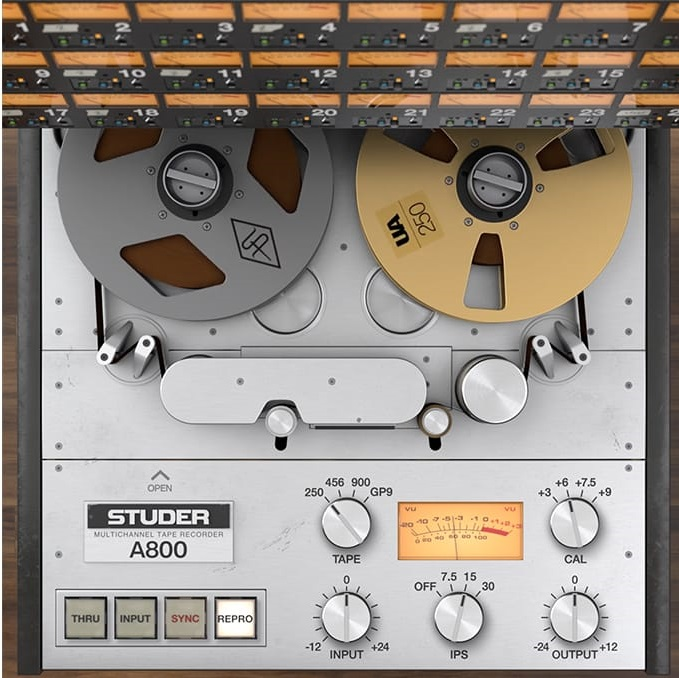
This plugin emulates another famous tape machine. As usual with tape emulation, using input and output control, you can regulate the amount of saturation the track receives or only add the tape warmth to the track.
You can choose from four magnetic tape types, which gives you even greater control over the changes the plugin makes to the sound.
Waves Abbey Road J37 Tape

With this professional Abbey Road tape machine emulator plugin, you can choose from three types of tapes. You can choose the tape speed and control the hiss, wow, and flutter effects of the tape.
Also, several kinds of tape delay effects are available in the plugin.
Wavesfactory Cassette
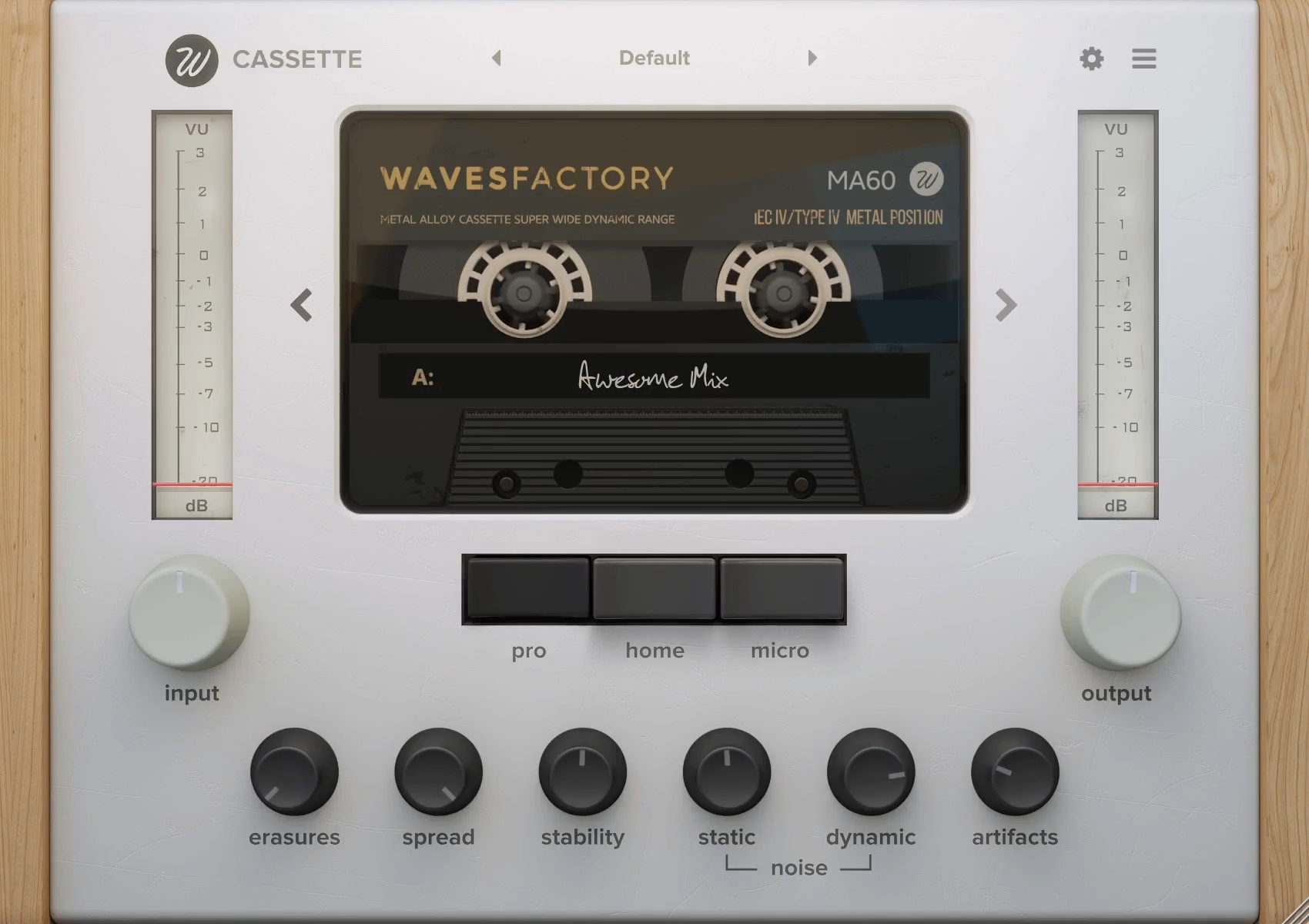
This plugin creates the audio cassette player effect, it does not emulate a professional studio machine.
The distortion is heavy, and the plugin will give you the distinct sound of a cassette player. You can choose from four types of cassettes and different players. There are a lot of other settings and control options in this plugin, it’s done pretty thoroughly. You can change all the distortion, effects, and artifact parameters, setting them from zero to 100%.
So, with the Cassette, you can achieve various effects, from heavy to really mild ones.
Saturators we use in particular cases
We use the following saturation plugins to create a distinct color in the mix or to add a particular effect to the sound.
Waves Abbey Road Saturator

Using this saturator, we add perfect high-frequency material to a sound.
Emulating the effect of the Abbey Road signal chain, this saturation plugin includes tube saturation and solid-state console saturation. It also gives you the possibility of parallel processing and the ability to choose the proportions of processed and original sound.
Waves Aphex Vintage Aural Exciter
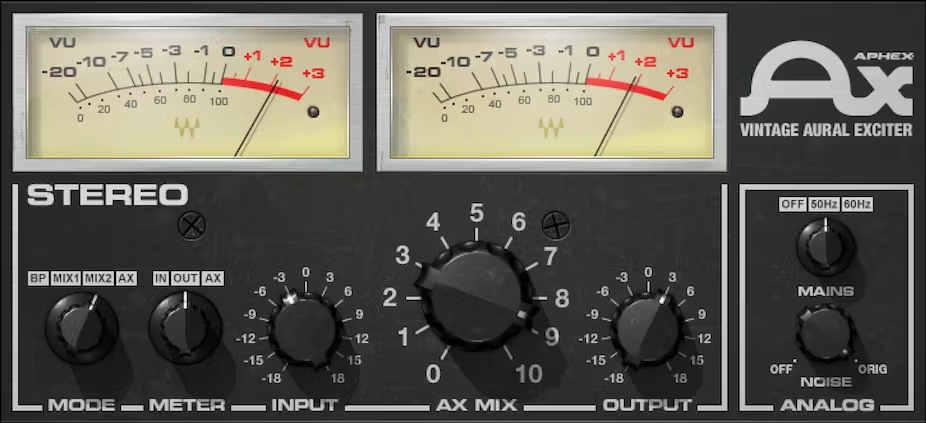
Aphex is a very aggressive saturation plugin, but it also perfectly adds high-frequency material to the sound.
However, if you use it, be very careful, and for a better result, use a parallel channel for the saturation.
We usually apply Aphex to sounds that, for some reason, are not bright at all. It could happen, for example, because of poor recording quality. Let’s say we have in a session a track with hats that are very dark and have all their material lower than 5 kHz. In this case, we use the Aphex Vintage saturation plugin in the AX mode, overload input and output for new harmonic waves, and then remove everything under 5 kHz.
This way, we create the upper part of a sound that has only low-frequency material. We can then work with this upper part separately and adjust it.
Berzerk Distortion
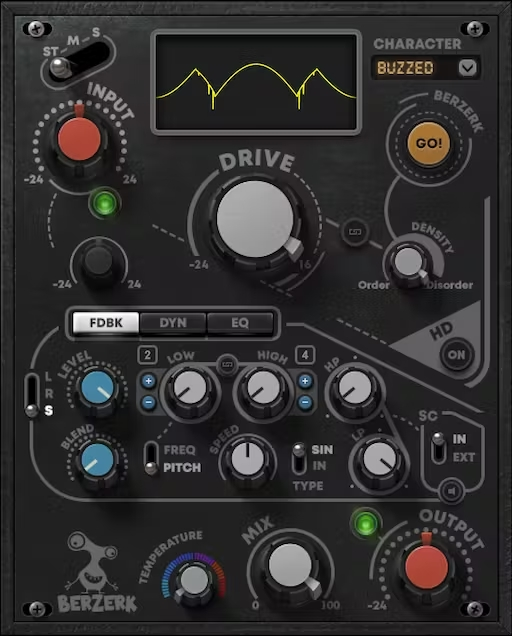
Waves Berzerk is one of the extremely aggressive distortion plugins and can’t be used on a regular basis in mixing because it works more like distortion FX.
It provides producers and mastering engineers with tools to create all kinds of intense, punchy, and aggressive distortion. We use it only when the style and individuality of the song we mix require such effects.
Channel strip plugins
The following plugins are soft, and using them, we add creative and a distinct texture to the sound. We encourage you to experiment with them as well.
For channel strip plugins our first choice includes:
- Waves NLS Non-Linear Summer
- Slate digital channel strip plugin
- UAD Channel strip plugins like Manley Tube Preamp and API Vision Channel Strip
Want a free test mix of your track?
We get it.
That’s why we’ll do a full hybrid (analog + digital) mix of your song —
for free.
No upfront payment. No risk.
You only pay if you’re blown away. And if you are, we’ll slash 40% off the final price.
Nobody else in mixing and mastering offers this.
Why?
Because most studios say yes to every project. We don’t. We only mix what we’re excited about — so send us your best track. If we like it, we’ll mix it like it’s going to the Grammys.
👉 Just drop your name and email to get started.
Use saturation wisely
You cannot create a great hit mix these days without saturation plugins. In this article, we discussed the plugins we use most often in our Major Mixing studio. However, as you understand, we never use all of them in one mix.
As always in mixing, you need to have in mind the sound you want to receive and know how you are going to do it. Saturator plugins are like any other tool you use to achieve your goal. It’s not just randomly turning the saturation knob, the mix knob, the drive knob, and other settings in the hope of suddenly hearing the perfect effect; you need to be wise with all the plugins, and saturation plugins are not an exception to this rule.
To create a great mix, you’ll need only two or three saturators, like, for example, one really functional plugin like FabFilter Saturn, your choice of a tape emulation, and maybe Aphex or Abbey Road Saturator if necessary.
Create your hits with Major Mixing
It’s not a secret that the music industry today makes it hard for new, rising artists to survive. You need to create a lot of material, promote yourself, and grow your audience. And nothing of that is possible if your mixes lack modern qualities and don’t sound fresh, amazing, and interesting.
Your songs must grab 100% of the listener’s attention from the first seconds, and the main steps in creating modern, high-quality sound are mixing and mastering.
If you are not sure that your songs are mixed and mastered at the highest industry level, we are here for you. At our Major Mixing studio, we gathered professional audio engineers with many years of experience. We have worked on big industry projects and are closely watching all the tendencies and industry requirements.
We are here to give your future hits a high-quality, modern, and professional sound. Contact us now, we are the help you need to release professional music and grow your career.






